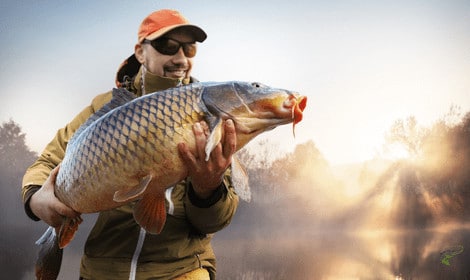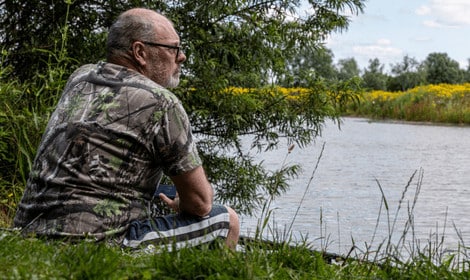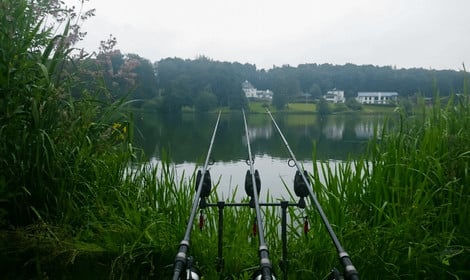
Patience is all part of the carp fishing game. There are many tactics, rigs, baits and approaches to your fishing that can make the difference between plenty of carp in the net or none at all but sometimes patience is the only thing that pays.
Where would be fun if you turned up to a venue week in and week out and consistently put carp in the net instantly?
The trial and error and thought process that goes into catching carp is all part of the sport and part of the reason we all love the sport, and you never know what you’ll get when you turn up for a fishing session.
For many anglers, casting any old rig into oblivion and hoping to catch carp quickly is just not going to work.
Yes, you may get lucky and be rewarded with a fish on the off chance, but there are methods and approaches you can learn to increase your chances of getting fish in the net as quick as possible.
In this post, I’m going to focus on how to catch carp quickly.
Unfortunately, there is no set formula that will put fish in the net quickly every session, but there are approaches you can take to increase your chances greatly.
How to Catch Carp Quickly?
Fish Heavily Stocked Water

Across the UK and the rest of the world, you will find bodies of water with different levels of carp population. In the UK, carp are fairly uncommon outwith fisheries, and if you are fishing rivers, canals or large reservoirs, your chances of catching carp quickly are extremely low.
In these situations, the best way to approach carp fishing is to try pre-baiting productive areas and master your watercraft skills to find the carp before you even drop a rig in the water.
If you want to catch carp as quickly as possible, you’ll want to fish in a heavily stocked commercial carp fishing venue.
Of course, these fishing venues will all be stocked to different degrees, so it’s best to do a bit of research and speak to other anglers to find the venue that is the most full of fish and the easiest to catch.
If the conditions are right and your fishing approach and knowledge are fairly good, you should have no problem catching carp quickly.
Learn Watercraft
Learning watercraft should be your main approach when attempting to catch carp as quickly as possible.
If you don’t have a good understanding of where the fish could be present depending on the external parameters such as, time of year, weather conditions, bottom composition, features and the venue you are fishing, then you are playing a game of luck.
Watercraft is essentially the act of learning how the carp will behave in certain conditions and where you will be able to find them.
If you can consistently get your rig into a carp holding area every fishing session, then you better believe you have a large chance of catching carp quickly.
Let’s take a quick look at some factors that make up watercraft.
Weather
The weather you choose to fish will impact your success in catching carp and where the carp are most likely to be in the water.
Two of the main factors of weather that affect where the carp will be is the wind and the air pressure.
Wind
As the wind blows the surface of the water, naturally, the water underneath will move opposite. The carp will naturally swim into the flow of water and often end up close to the bank where the wind is blowing too.
If the wind is warm (from the southwest), the fish will likely follow.
If there is a cold wind from the northeast, the fish will likely move away from it to more comfortable water.
Air pressure
Air pressure can also be a good indication of where the carp will be in the water. You can read a barometer to tell if the air pressure is “high” or “low”. Generally, anything over 1000 is considered high and anything below this low.
In high-pressure weather fronts, the sky will likely be clear with sunny days and with low pressure, the sky will likely be grey with winds.
On high-pressure days it’s common for the fish to be swimming in the upper layers of the water, so your approach should be tailored to fishing the upper layers.
In low pressure, it’s common to find carp feeding on the bottom.
Water Clarity
The water clarity in an area of a lake is also a good indication of where the fish could be. If a lot of the lake is clear and you see an area of the lake that is dirty and silty, the carp are rooting through the silt on the bottom looking for food.
If you want to catch carp quickly, this can be a good indication that the carp are feeding in the area, so get a rig in there as soon as possible.
Features
“Features” are areas of the lake that carp will usually feel safe near.
When you turn up at a new venue and are looking for where the carp may be, features are where you should be checking primarily.
Features include:
- Margins
- Overhanging Trees
- Weeds
- Lilly Pads
- Islands
- Snags (e.g trees fallen in the water)
If you concentrate your attention on these parts of a venue and look for other telltale signs of carp the chances are you’ll be able to spot some activity and know that there is carp in the area before sending your rig out.
Signs of Carp
It should be obvious that to find the carp you want to catch quickly, you should be looking for signs of them. Too many anglers turn up to a venue and lob out a rig without considering watercraft or spotting fish signs.
This is the perfect way not to catch carp quickly.
There are plenty of things you can look for that will indicate carp in the area. These include:
- Bubbling: Consistent bubbles coming to the surface is the perfect sign of carp feeding below. As they feed and root through the silt and release air from their gills to the surface.
- Clouded Water: I touched on this above.
- Carp Jumping: If you see carp breaching the surface, you better believe you should have a rig in there. There are however a few types of jumps that are more likely to indicate feeding. If the fish are head and shouldering (i.e poking their head and shoulders above the water) or jumping straight out of the water, there is a good chance they are feeding below this area.
Seasons

The season also plays a large part in watercraft, and you will likely be able to catch carp quickly if you get everything else done right.
Throughout the year, as the season change, the varying temperatures will alter the water temperatures across the country.
This change in water temperature greatly impacts carps’ behaviour and how actively they will be looking for food and feeding.
Winter
In the winter, when water temperatures are at their lowest, the carp enter a sort of hibernation state where they will significantly reduce movement and feeding activity.
During the winter, the carp will sometimes only feed once a day in a short time window, usually around mid-day and the warmest part of the day.
If you haven’t identified when this feeding window usually is and where the carp are hiding out during the winter, then you better believe you’ll not be catching any carp quickly.
Summer
In the summer, the water will be at its warmest and the carp will be most active and can be found feeding through the day and night.
That being said, it is common for the carp to feed most heavily at dusk and dawn, but that’s not always the case, and you should get to know the venue you are fishing.
The summer provides a good opportunity to catch carp quickly if you gain a good understanding of watercraft and can pinpoint where the fish are feeding when you turn up at a venue.
When the water warms significantly and on high-pressure days, it is common to find plenty of carp swimming in the top few feet of water.
This means they will be easily spotted, and you can target them with surface fishing tactics.
This can be a great method to be selective and catch carp quickly.
Some believe that summer is the best time to catch carp, but I believe this is not the case; in the summer, commercial venues will be extremely overfished, and a lot of the fish will become wary of anglers’ baits and hide away in unfishable areas of the lake until they feel safe to feed throughout the night.
Spring
As the winter begins to warm and spring approaches, the carp will start to become more active after a long winter with reduced feeding and low energy expenditure.
Some anglers believe spring can be the most productive time to fish for carp on a good day. When the water has warmed considerably after a cold winter, the fish will be looking to pack on some weight lost over winter.
Watercraft is again so important in spring (and in fact any time of year) so if you want to catch carp quickly in spring, find where the fish are.
Autumn
Autumn provides a great opportunity to catch carp quickly. The fish will sense the dropping water temperatures and know winter is not far away.
Over this period, they spend a lot of time feeding up on high nutritional baits to pack on as much weight as possible before winter.
This time of year is also far less pressured by anglers, and you will have far more opportunity to pick the peg you want to fish and move freely around the venue.
Try Pre-Baiting
Pre-baiting is another approach you can take to improve your chances of catching carp quickly.
Pre-baiting is mixing up plenty of carp, attracting baits and throwing or spodding them into a potential carp holding area of a lake a few days or weeks before your fishing session.
At commercial carp fisheries, this tactic is useless as you can’t guarantee you are going to manage to fish your pre-baited swim when you come to fish.
In large bodies of water, rivers or canals that not a lot of anglers fish then, this approach can prove effective.
Pre-baiting comes hand in hand with watercraft as. First, you need to identify a potentially productive swim that carp commonly frequent.
Once you’ve found a swim with potential, you can start feeding the area consistently for a few weeks before your session.
By doing so, the carp will become accustomed to coming to this swim for free food and will begin to feel safe while feeding over this area of free bait.
This means, that when you come to cast a rig into the area, there’s a high chance it will already be holding fish, waiting for the next round of freebies.
If the carp are already in the swim feeding comfortably and you drop a rig in there, then there’s a high chance you’ll manage to catch some carp quickly.
That’s All
Catching carp quickly doesn’t always have to be a game of luck (you still need a bit). Learning watercraft and learning to spot productive areas of a lake before you even start fishing should be the biggest in any fishing approach.
If you’re unsure where the fish are or could be, then there is very little chance you will be able to put any fish in the net over session never mind quickly.
I hope you can now see how to catch carp quickly and can put a few extra fish in the net.
Let’s just remember, though, that a large factor in any fishing approach is patience; you are not going to manage to catch carp instantly every fishing session, but you better believe we all like to try.
If you have any questions, don’t hesitate to leave a comment below, and I’ll get back to you ASAP.





